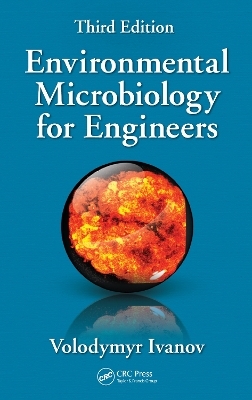
Environmental Microbiology for Engineers
CRC Press (Verlag)
978-0-367-32165-9 (ISBN)
The third edition of Environmental Microbiology for Engineers explores the role that microorganisms play in the engineered protection and enhancement of an environment. Offering a perfect balance of microbiological knowledge and environmental biotechnology principles, it provides a practical understanding of microorganisms and their functions in the environment and in environmental engineering systems. The book also presents a quantitative description of applied microbiological processes and their engineering design. This updated edition includes all new information on construction biotechnology, biogeotechnical engineering, construction biomaterials, environmental engineering of life-support closed ecosystems, defense biotechnologies, and biosafety in civil and environmental engineering.
Features:
Classroom tested in universities as a primary course text for civil and environmental engineering students
Includes quizzes, problems, and solutions for better understanding of the material
Covers essential topics such as the diversity and functions of microorganisms in the environment and environmental engineering systems, the structure and functions of microbial ecosystems, applied microbial genetics and molecular biology, environmental bioengineering, and more
Offers combined coverage of microbiology and biotechnology adapted for students in advanced civil and environmental engineering courses
Environmental Microbiology for Engineers provides a practical understanding of microorganisms in civil engineering processes and their functions in environmental engineering systems. It is intended for upper-level undergraduate, graduate, and post-graduate students of civil and environmental engineering. It is also useful for practicing environmental engineers working in the areas of wastewater, solid waste treatment, soil remediation, and ground improvement.
Volodymyr Ivanov, PhD, earned his PhD and Doctor of Sciences degrees in microbiology and biotechnology in the National Academy of Sciences of Ukraine. His professional experience includes 40 years of the graduate and post-graduate teaching and research in microbiology and biotechnology in the universities of Ukraine, Thailand, South Korea, Singapore, and USA. He has published over 220 papers, 8 patents, and over 30 book chapters and several monographs on microbial physiology, environmental and construction microbiology and biotechnology. His major scientific achievements are the theory of physiological dualism of a growing cell existing in both exotrophic and endotrophic states, revealing of a multicellular bacterial granule as a proto-organism, periodic table of physiological classification of prokaryotes, and the establishing of Construction Biotechnology as a new scientific discipline.
1. Microorganisms 2. Biomolecules 3. Metabolism 4. Biooxidation and Bioreduction 5. Biodegradation 6. Biosynthesis 7. Cells and Cellular Aggregates 8. Microbial Reproduction and Growth 9. Microbial Ecology 10. Classifications of Viruses and Microorganisms 11. Physiological Classification of Prokaryotes 12. The Groups of Anaerobic Fermenting Prokaryotes 13. The Groups of Anoxic Prokaryotes 14. The Groups of Microaerophilic and Facultative Aerobic Prokaryotes 15. The Groups of Aerobic Prokaryotes 16. Microorganisms and Public Health 17. Biosafety In Civil and Environmental Engineering 18. Biotechnological Processes 19. Microbiological Methods Used In Engineering 20. Aquatic Ecosystems 21. Biotreatment of Polluted Water 22. Anaerobic and Anoxic Treatment of Waste 23. Aerobic Treatment of Wastewater 24. Value-Added Microbial By-Products 25. Biotreatment of Industrial Hazardous Wastes 26. Solid Wastes Biotreatment 27. Bioremediation of Polluted Soil 28. Biomaterials and Bioprocesses of Construction Biotechnology 29. Microbiology of Air and Air Biotreatment 30. Microbiology of Closed Ecosystems 31. Biodeterioration, Biocorrosion, and Biofouling 32. Exam Questions and Solutions
| Erscheinungsdatum | 29.07.2020 |
|---|---|
| Zusatzinfo | 30 Tables, black and white; 106 Illustrations, black and white |
| Verlagsort | London |
| Sprache | englisch |
| Maße | 178 x 254 mm |
| Gewicht | 1133 g |
| Themenwelt | Naturwissenschaften ► Biologie ► Genetik / Molekularbiologie |
| Naturwissenschaften ► Geowissenschaften ► Hydrologie / Ozeanografie | |
| Technik ► Bauwesen | |
| Technik ► Umwelttechnik / Biotechnologie | |
| ISBN-10 | 0-367-32165-3 / 0367321653 |
| ISBN-13 | 978-0-367-32165-9 / 9780367321659 |
| Zustand | Neuware |
| Informationen gemäß Produktsicherheitsverordnung (GPSR) | |
| Haben Sie eine Frage zum Produkt? |
aus dem Bereich


